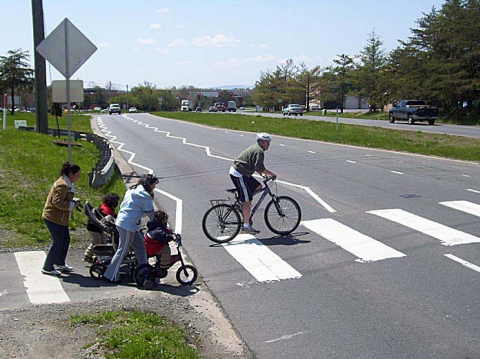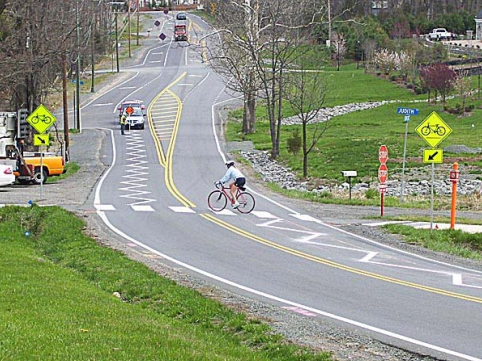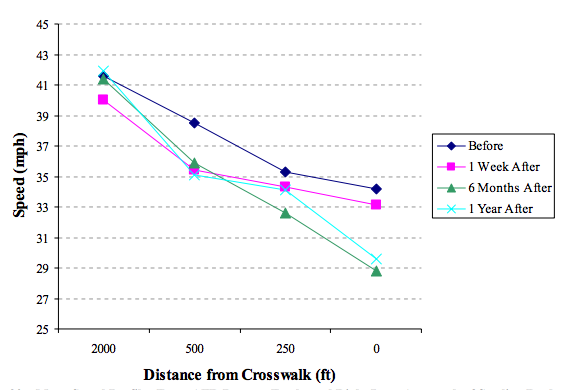
At 11 points in northern Virginia, the familiar straight dashed lines on the road gives way to a series of zig zags. The unusual markings, the result of a pilot project from the Virginia Department of Transportation, are meant to alert drivers to be cautious where the Washington and Old Dominion (W&OD) Trail intersects with the road -- and bicyclists and pedestrians frequently cross.
After a year-long study of this striping treatment, Virginia DOT officials say the markings are effective and should become part of the Manual on Uniform Traffic Control Devices -- the playbook for American street designers.

VDOT found the zig zag markings slowed average vehicle speeds, increased motorist awareness of pedestrians and cyclists, and increased the likelihood that drivers would yield. They also noted that the effects of the design change didn't wear off once motorists became used to the it -- they still slowed down a year after installation.
VDOT says the results indicate that zig zag markings are a more cost-effective solution for conflict points between trails and high-speed roads than the current treatments: flashing beacons placed above the road or off to the side.
The zig zag concept was imported from Europe. It is currently used in only two other locations in North America: Hawaii and Ottawa, Ontario. It was one of more than a dozen European traffic management techniques VDOT zeroed in on to test locally.

The W&OD trail is a popular route for both recreation and commuting in the D.C. metro area. Between 2002 and 2008, there were 21 collisions involving cyclists and two involving pedestrians along the trail, which intersects with major roads at 70 points along its 45-mile path in Fairfax and Loudoun counties in Virginia.
The effect of the zig zag markings was measured using speed radars over the course of a year. Feedback from motorists, cyclists, and pedestrians was also collected using online surveys. While the survey did not come from a random sample, 65 percent of drivers said they were more aware because of the markings and 48 percent said they liked them. The zig zags were also popular with cyclists; 71 percent said the markings affected driver behavior.
Said one respondent: "Drivers rarely stopped before the markings were installed. Since installation, they stop much more often."





